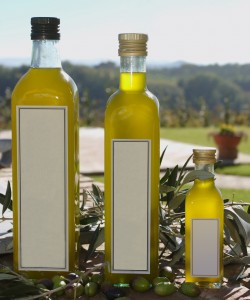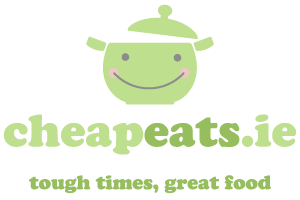 These days we are bombarded by nutritional facts and figures which on the one hand is a good thing because we are getting important information but on the other hand can be really confusing.
These days we are bombarded by nutritional facts and figures which on the one hand is a good thing because we are getting important information but on the other hand can be really confusing.
It can be very difficult to pick your way through the maze of food facts and figure out if certain information is coming from a vested interest or is a genuine fact.
I know my brain gets very steamy working out which fat is essential and which is plain crap. Well, the Guardian had a very interesting piece on the subject. Here is an overview of good and bad fats, the best and worst oils to use and a couple of Brain recipes that will supply your mind and body with the right nourishment and stop it from steaming up like mine.
Do you find it difficult to decipher between nonsense nutritional advice and hard fact?
The good fats
- Essential fatty acids – These are polyunsaturated fats and are liquid at room temperature. There are two groups – omega 3 and omega 6. EFAs are essential and our bodies cannot manufacture them.
- Linoleic, otherwise known as omega 6 fatty acids, are found in most vegetable oils. You don’t need much of them and excessive amounts can speed up the growth of cancer cells. Proportions of omegas 3 and 6 are important. Oils with lots of 6 and very little 3 put you in double jeopardy because of the likely cancer-forming properties of the omega 6s and because they also have a negative effect on the heart protection benefits of omega 3.
- Alpha-linolenic, or omega 3 fatty acids are the healthiest of all and abound in oily fish and some vegetable oils, especially those made from rapeseed, walnuts and flax seeds. They protect against heart disease and cancer and are very important during pregnancy for the proper formation of the baby’s brain cells.
- Conjugated linoleic acid – Occurs in free-range cattle raised on natural grassland. Has anti-cancer properties and stimulates the human body’s conversion of stored fats into energy.
- Monounsaturated fats – Olive oil is the most commonly used and, although liquid at room temperature, it solidifies if refrigerated. The richest sources are olives, olive oil, avocados, walnuts and walnut oil, peanuts and peanut oil. Monounsaturated fats are much better for your heart and can even help reduce cholesterol.
Bad fats
- Saturated fats – Nearly all animal fats from meat and meat products – milk, cream, cheese, butter, lard and suet – go solid at room temperature. These can increase cholesterol which in turn locks arteries and causes heart disease. Though there is little evidence they play a role in the development of cancer, many experts believe that lower consumption reduces the risk.
- Trans fats – These are the ones to avoid. Do not occur in nature but are the result of a catalytic process to solidify the cheapest vegetable oils used in food manufacture. The resulting hydrogenated fats are used in take-aways, ready meals, cakes, biscuits, crisps and sauces. Consuming these raises the risk of heart disease. There is evidence that trans fats are linked to a risk of breast cancer.
Good oils
- Olive oil – Reduces blood levels of cholesterol, contains monounsaturates and is low in omega 6.
- Rapeseed, walnut and flax seed oil – All low in saturated fatty acids, substantial monounsaturates and good balance between omega 3 and omega 6 EFAs.
Not so good oils
- Coconut and palm oils – Contain large amounts of saturated fats, little monounsaturated and virtually no omega 3. Best avoid these ones.
Kipper kedgeree
Salmon, smoked salmon or prawns are very good additions to this dish. All these fish are extremely rich sources of EFAs.
Serves 2-3
Ingredients:
- 225g undyed kippers
- 225g long-grain rice
- 4 hard-boiled eggs, chopped
- 25g butter, diced
- 1 tsp mild curry powder
- 1 tbs chopped parsley, plus extra for garnish
- Freshly ground black pepper
- Lemon wedges, to serve
Instructions
- Place fish in shallow pan, cover with water. Bring to the boil, cover with lid and turn off heat. Leave for ten minutes, by which time the fish should be cooked through.
- Rinse rice carefully and place in a pan of boiling salted water. Bring to a simmer and cook for 35 minutes. Drain and fork up before using. Skin and flake the fish, checking for bones.
- Stir all ingredients into the rice. The diced butter should melt into it. Check seasoning, and serve with a little extra chopped parsley on top and a lemon wedge.
Vegetable herb bake
Healthy enough on its own, with all the benefits of onions, garlic and the vegetables, the white sauce is made here with soya milk for the extra isoflavones that help protect against osteoporosis and menstrual problems. There are also some essential fatty acids in the oregano, soya milk and flax-seed oil.
Serves 6
Ingredients
For the white sauce:
- 50g unsalted butter
- 3 tbs flour
- ½ tsp ground cumin
- 500ml soya milk
For the lasagne:
- 1 large onion, finely chopped
- 1 garlic clove, finely chopped
- 4 tbsp flax-seed oil
- 3 courgettes, diced
- 1 large aubergine, diced
- 3 large tomatoes, coarsely chopped
- 1 tbsp tomato puree
- 3 tbsp fresh oregano, finely chopped (or 1 tbs dried oregano)
- 400g dried lasagne, blanched for 3 minutes in boiling water – or according to packet instructions
- 3 tbs freshly grated Parmesan cheese
- 6 fronds fresh dill
Instructions
- Preheat the oven to 220C/425F/gas mark 7. To make the white sauce, melt the butter gently in a large frying pan. Take off the heat and stir in the flour and cumin. Return to a gentle heat and cook, stirring continuously, for 2 minutes. Gradually add the soya milk, stirring until thickened.
- To make the lasagne, sweat the onion and garlic gently in the oil until soft. Add the courgettes, aubergine, tomatoes, tomato puree and oregano, and continue cooking for 5 minutes, stirring continuously.
- Grease a wide, shallow pasta dish with the rest of the oil. Pour in one layer of blanched lasagne sheets. Spread on half the vegetable mixture and a third of the white sauce. Add another layer of blanched lasagne sheets. Follow with the rest of the vegetable mixture and another third of the sauce. Add another layer of blanched lasagne sheets and the rest of the sauce, making sure the pasta is well covered with the sauce.
- Bake in the oven for 15 minutes. Remove, scatter Parmesan and dill over the lasagne and return to the oven for another five minutes until the cheese is golden and bubbling.

Friday 9 July, 2010 at 10:04 am
Omega 3 and 6 are fantastic for mood and depression treatment. If you dont like fish or taking fish oils, take the kids version capsules instead. They wont repeat on you or leave a fishy taste.
This sounds like a Chat magazine top tip! 😀
Friday 9 July, 2010 at 1:46 pm
This summary reminds me a bit of the Daily Mail’s efforts to divide the world into things that cause cancer and things that cure cancer (running totals here: http://kill-or-cure.heroku.com/).
What’s the basis for this sentence, please? – “Though there is little evidence they play a role in the development of cancer, many experts believe that lower consumption reduces the risk.”
Saturday 10 July, 2010 at 2:22 pm
Conveniently, there’s a good article by Ben Goldacre on this broad subject (and the EU’s rejection this week of the majority of food-as-medicine claims) today:
http://www.badscience.net/2010/07/the-bullshit-box/
Sunday 11 July, 2010 at 9:24 pm
I didnt say anything about omega 3 and 6 improving brain power in kids, I just posted from my own experience.
Tuesday 13 July, 2010 at 9:31 am
This interactive graph from Information is Beautiful is really useful for this kind of thing – shows which supplements have proven benefits for which conditions:
http://www.informationisbeautiful.net/play/snake-oil-supplements/
Aidan, I’m a big Ben Goldacre fan as well. Have you read his book?
Tuesday 13 July, 2010 at 11:23 am
I have – he seems to have many of the same bugbears as I do (e.g., re: science/health reporting and food-as-medicine), so I keep an eye on his work.
I hadn’t come across the Information is Beautiful chart before – it’s quite pretty, really 🙂